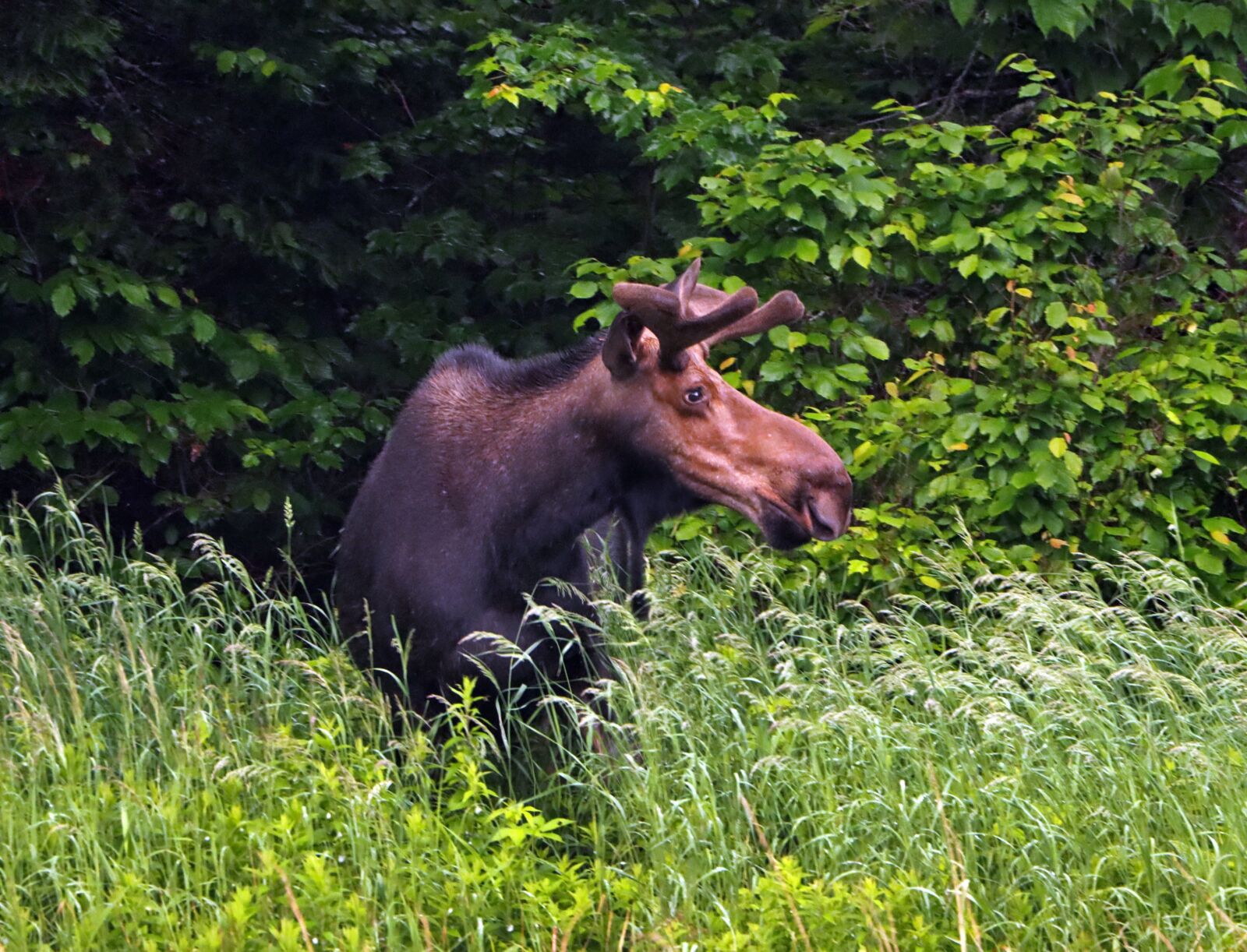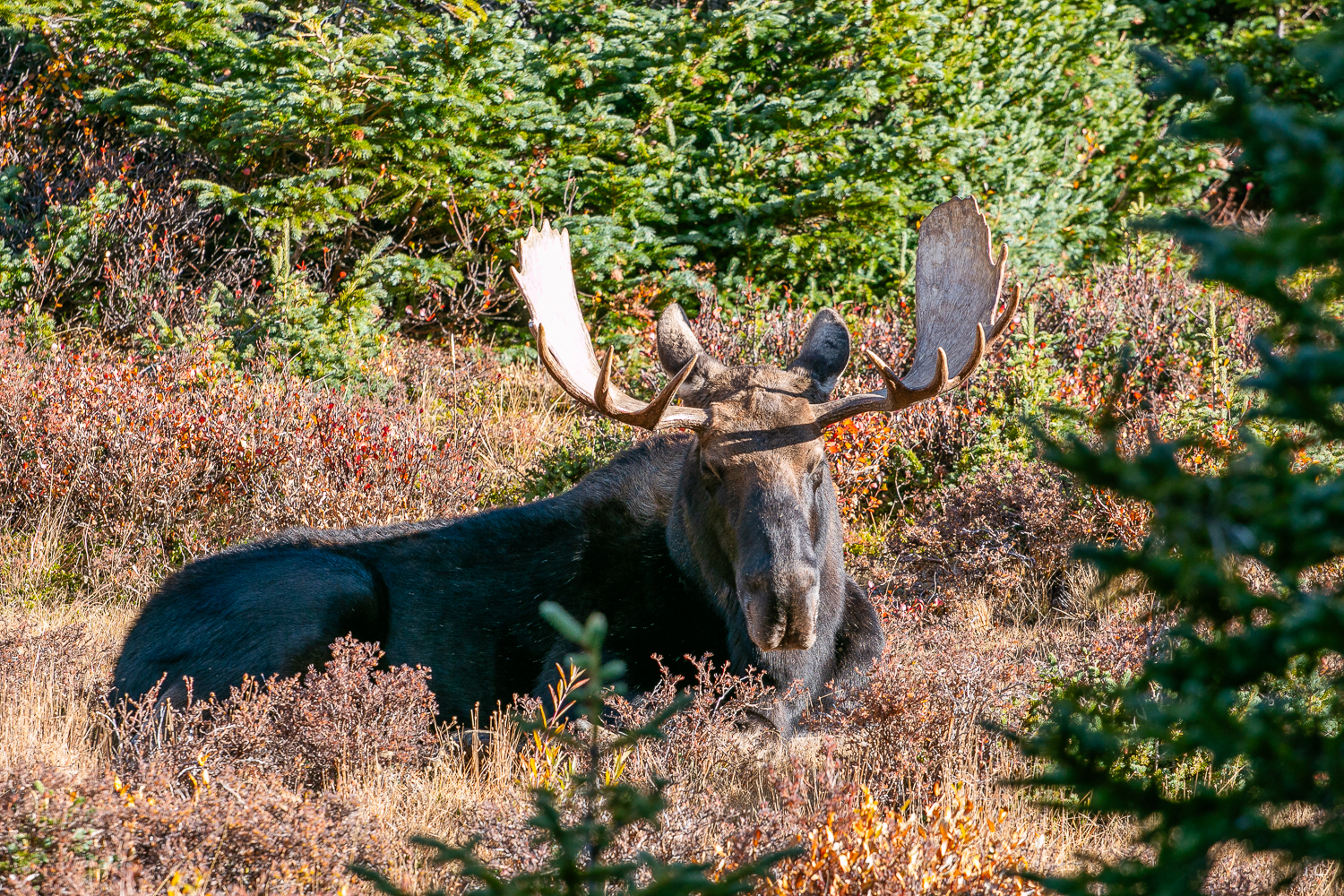Moose in North America are made of 4 subspecies
- Eastern Moose – Eastern Canada, Northeastern U.S.
- Western Moose – British Columbia to western Ontario, Michigan’s Upper Peninsula, northern Wisconsin, Minnesota and North Dakoa
- Alaska Moose – Alaska and Western Yukon. The largest subspecies in North America.
- Shiras Moose – Wyoming, Idaho, Utah, Colorado, Washington, Oregon and Montana. The smallest subspecies in North America

Photo by Peggy Yaegar
Moose are the largest of all deer species
Average height to shoulder – 5 – 6.5 feet.
Average Weight – 800 to 1,200 lbs
Male moose shed their antlers each winter
The antlers help channel sound to the moose’s ears.

Photo by Nicole Kofoed
Moose are quite nimble – by water and land.
Despite their size, moose are good swimmers, paddling miles at a time and even submerging for 30 seconds.
On land, moose can run up to 35 mph and trot at 20 mph.
The nomenclature isn’t unfamiliar.
- Male moose – bulls
- Female moose - cows
- Baby moose – calf

Photo by Carolyn Martens
Moose injure more people than any other wild animal in the Americas.
Not usually aggressive, moose can charge when provoked. Due to high hormone levels, moose can become aggressive during mating season. Female moose with calves are especially protective and will attack if they feel threatened or if a human comes between the cow and calf.
Moose are all about the plants.
As herbivores, moose eat many types of plants and fruit. Usually half of their diet comes from aquatic species which they can easily eat because of their nostril closing capabilities.
Learn more:
--------
Cover photo by the U.S. Forest Service.
Bison, bears, bats…you name it, and forests have it. We hope you enjoyed this blog and that you’ll explore the other fascinating wildlife topics here. Just as the wildlife we all cherish depends on healthy habitat, the NFF depends on support from generous, involved individuals like you! Please click here to make a much-needed unrestricted gift today. On behalf of the bison, bears, bats, and countless more creatures, thank you!

